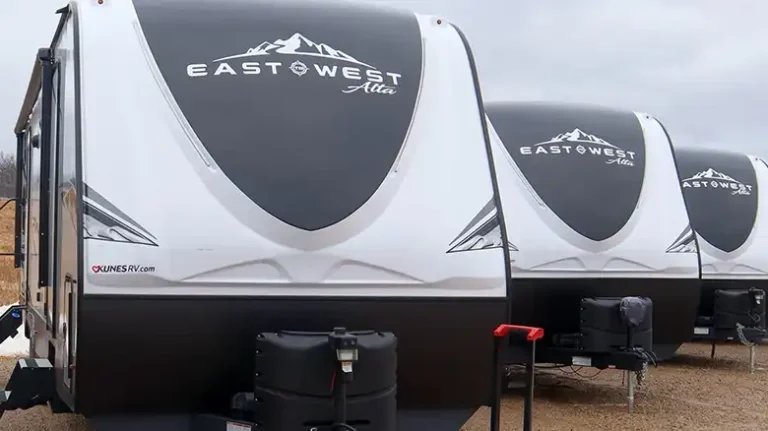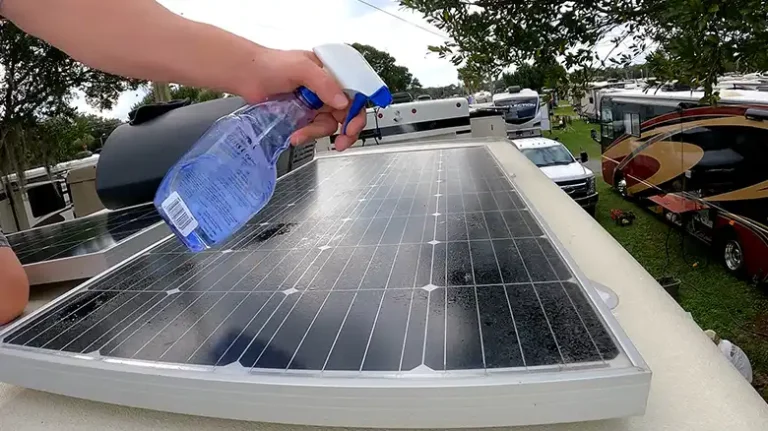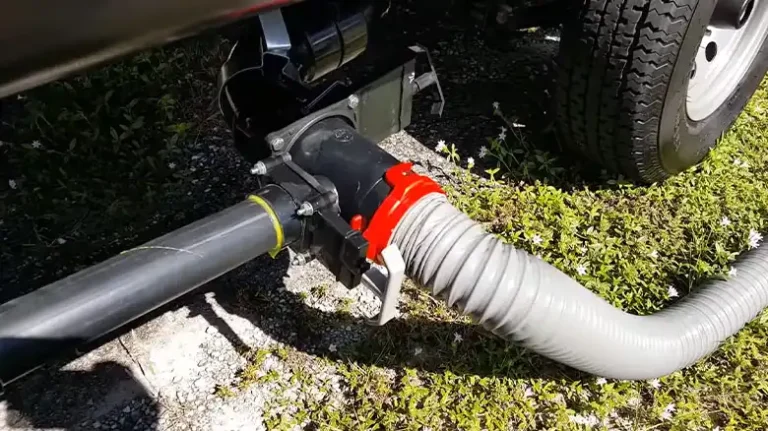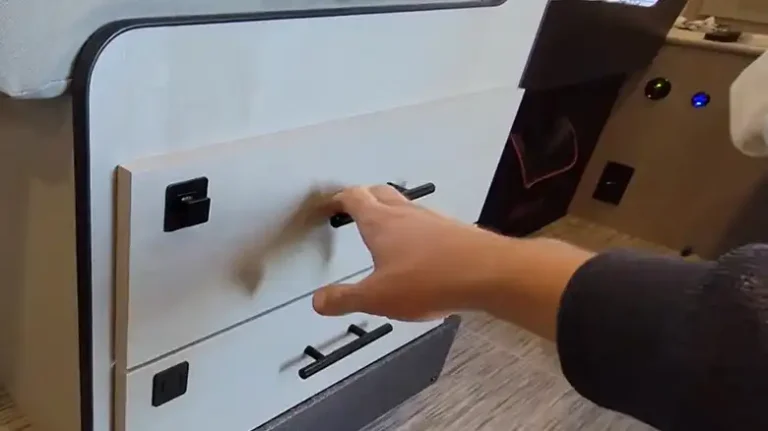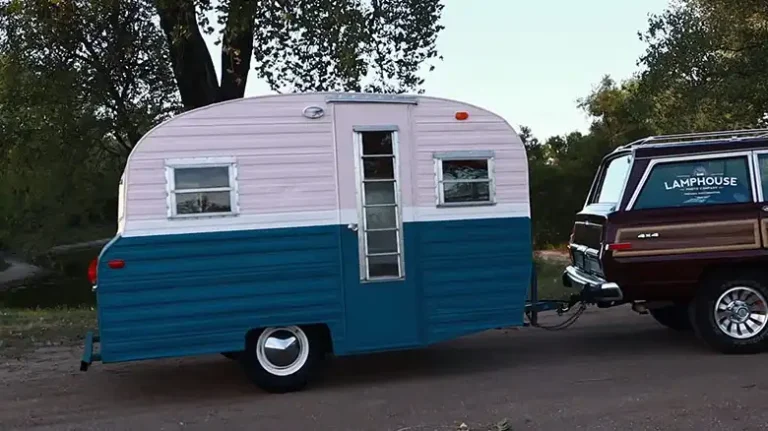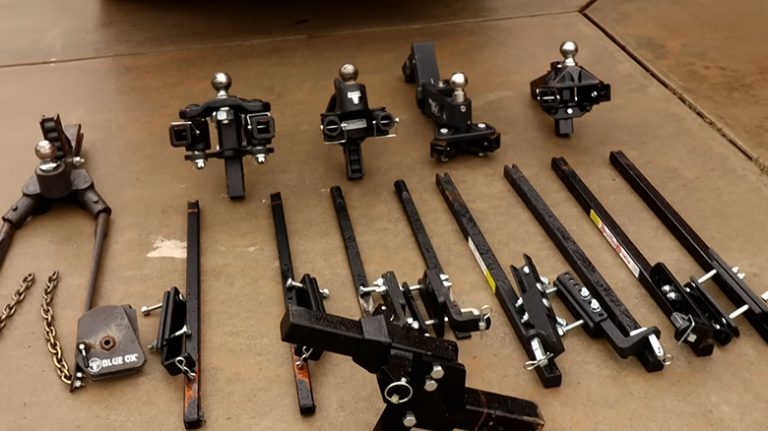How Does an RV Water Pump Work | A Complete Guide
An RV water pump is a crucial plumbing component that delivers pressurized fresh water throughout the RV from the onboard water tank. When you open an RV faucet or shower, the water pump automatically turns on to pull water from the tank and push it through the lines to that fixture.
The pump builds pressure in the plumbing system so water can flow just like it would from a municipal water supply. This allows smooth, consistent water flow for showering, washing dishes, or flushing the toilet even while camping far off the grid. Having a reliable RV demand pump that turns on and off on demand is essential for comfortable RV living without access to external water.
A faulty RV water pump that fails to pressurize the system or cycles erratically can make basic water use frustrating or even impossible. Performing regular maintenance and knowing how the pump operates allows RVers to keep this key system running properly for secure water access wherever they roam.
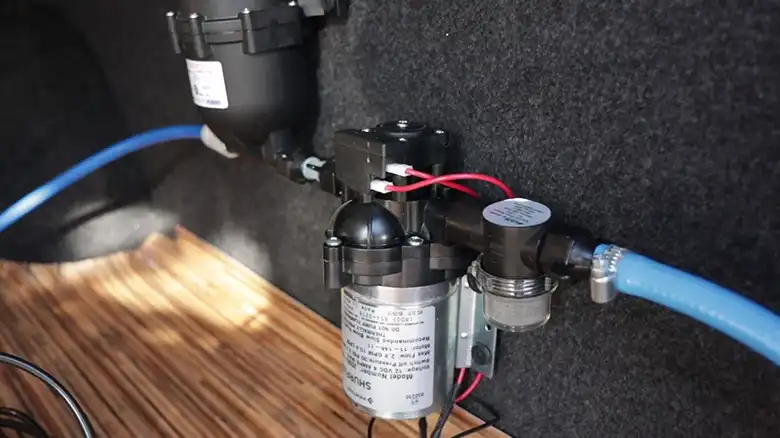
A Brief Overview of RV Water Pumps
RV water pumps are vital components that make comfortable RV living possible while off the grid. An RV water pump’s job is to pull fresh water from the RV’s fresh water holding tank and push it with pressure to all the fixtures and plumbing lines. This allows water to flow securely from faucets, showers, sinks, and toilets even when no external fresh water source is available.
What is an RV Water Pump?
An RV water pump is a small electric pump installed in the RV’s plumbing system between the fresh water tank and the fixtures and appliances that use water. It serves a crucial function: delivering pressurized fresh water throughout the RV.
When you open a faucet or turn on a shower in your RV, the water pump automatically switches on to pull water from the fresh tank and push it through the plumbing lines leading to that fixture. This creates flowing pressurized water even though you aren’t hooked up to an external water source.
RV water pumps run off the RV battery and require electricity to operate. They are designed to turn on and off automatically as needed when fixtures are opened or closed. This “ demand” operation makes RV water pumps highly efficient.
Where is the RV Water Pump Located in an RV?
The RV water pump is installed in-line on the plumbing lines somewhere between the fresh water holding tank and the RV fixtures. Common locations are under the galley sink, in basement storage compartments, or in the water bay.
Look for a small electric pump typically labeled “water pump” mounted in-line on the plumbing pipes. There will also likely be a filter or small strainer on the inlet side to filter out debris before water enters the pump.
When to Turn Off RV Water Pump?
It’s a good idea to switch off your RV water pump whenever the RV is in motion or when you will not be using water for an extended period. This prevents unnecessary cycling and wear.
Also turn off the pump when the fresh water tank is empty to avoid damage. The pump may rapidly cycle on and off if it tries to draw from an empty tank.
When to Use an RV Water Pump?
Use your RV water pump whenever you need running water and are not hooked up to an external fresh water source. This includes:
– Boondocking or dry camping off the grid
– Overnighting in locations with no water/power hookups
– Camping or living off-grid without a direct city water supply
The water pump allows the fresh water tank to provide pressurized water just like municipal water pipes.
Duration to Run an RV Water Pump?
It’s fine to leave an RV demand water pump on continuously as long as the fresh water holding tank has a sufficient supply. The pump will automatically cycle on/off as needed when fixtures are opened.
However, turn the pump off when not actively using water to avoid unnecessary wear and cycling. Don’t let the pump run overnight or when away from the RV unless water is needed for a specific reason.
What is the Longevity of an RV Water Pump?
With proper installation and maintenance, most RV water pumps will provide reliable service for 2-4 years or longer. Higher end pumps may last 5+ years. But factors like pump quality, usage levels, and maintenance impact life expectancy.
Routinely inspect and service the pump to maximize longevity. Symptoms like loss of pressure indicate when repairs or replacement are needed.
Does an RV Water Pump Run Off Battery?
Yes, RV water pumps operate on 12-volt DC power provided by the RV battery bank. This allows the pump to work independently off-grid. Constant pressure pumps draw more steady power. Demand pumps only cycle on when the pressure drops.
Make sure your RV batteries are fully charged before dry camping and monitor voltage levels. Operating the water pump on an undercharged battery can prematurely kill your battery.
Types of an RV Water Pumps
There are two primary varieties of RV water pumps; demand pumps and constant pressure pumps. The type used in a given RV depends on factors like the pump’s location, the size of the RV, and user preference. But most RVs have simple demand pumps for their fresh water system.
1. Demand Water Pumps
Demand pumps, also called on-demand, automatic, or cycling pumps, are the most common type of RV fresh water pump. They operate “on demand” by using a pressure switch that turns the pump on when it senses a drop in water pressure indicating an open faucet or valve. The pump then pressurizes the lines and shuts back off when the pressure returns to normal.
Benefits of RV demand water pumps:
Energy efficient – turns on only when needed vs running continuously
Stops immediately when fixtures are closed to avoid wasted pumping
Types include centrifugal, turbine, and diaphragm pump models
Range from small 1.5 GPM units for minimal demand to larger 3-7 GPM pumps
Demand pumps are an inexpensive, low-power solution well-suited for smaller RVs with moderate fresh water needs.
2. Constant Pressure Water Pumps
Constant pressure pumps run continuously rather than cycling on and off. A pressure sensor with a wide activation range signals the pump to maintain a preset pressure level at all times. The pump runs even when outlets are closed.
Features of constant pressure RV water pumps:
– Provides steady pressure without pump cycling
– Require more power since they run non-stop
– Better for large RVs with high water demand
– Typically used for pressurized fresh water and gray/black tank drainage transfer
Constant pressure RV pumps ensure even flow at all fixtures. But they use more battery power than cycling demand pumps.
Components of an RV Water Pump
RV fresh water pumps contain two main components – the motor/body and a pressure switch – along with inlet/outlet plumbing connections. Understanding these core pump parts helps troubleshoot issues.
A. Main Pump Unit
This contains the small electric motor and the internal pump body. Two types of pump bodies are common:
1. Diaphragm Pump- Uses a flexible diaphragm that flexes back and forth to pump water. An inlet and outlet valve control water flow.
2. Piston Pump- Uses a spring-loaded piston that moves linearly to pressurize water on each stroke. Also has inlet/outlet valves.
Both pump designs generate water pressure on the output when the electric motor runs. The motor powers the moving diaphragm or piston.
B. Pressure Switch
This senses outlet water pressure and signals the pump motor when to turn on or off. It is preset to:
1. Turn on the pump when the pressure drops below a set point
2. Turn off the pump when pressure rises following pump activation
Adjustable pressure switches let users customize the pressure level. A bad switch can cause pump issues.
C. Inlet and Outlet Connections
These allow plumbing hookup on both ports:
1. Inlet brings water from the fresh tank into the pump
2. Outlet sends pressurized water downstream to fixtures
Using proper hose sizes and securing the connections prevents leaks and pressure loss.
Power Sources of an RV Water Pump
RV fresh water pumps mainly run on 12-volt DC power via the RV battery bank. But some setups can also use 120-volt AC current if available.
A. 12-Volt DC Systems
The typical RV water pump setup uses 12-volt DC power supplied by the RV batteries. Benefits include:
– No need for 120-volt shore power or generator electricity
– Allows pump operation anywhere off-grid
– DC-powered demand pumps sip minimal current when cycling
But constant pressure DC pumps draw steady amps which can quickly drain batteries. Always monitor your RV battery voltage levels while free camping and use a fully charged battery.
B. AC-Powered Pumps
Some RV plumbing systems can utilize 120-volt AC-powered water pumps when connected to shore power or running the generator.
Considerations of AC pump power:
– Provides constant pressure without battery drain
– Requires either a generator or hookup to 120-volt supply
– Allows heavy water use without depleting batteries
– Requires DC pumps as a backup for dry camping
AC-powered pumps provide high water flow when external power is available. But the 12-volt DC pump is still needed when off-grid.
How an RV Water Pump Works
To know how the RV water pump operates helps troubleshoot and prevent problems. Here’s a step-by-step overview of how an RV demand pump functions when you open a faucet:
A. Initiation of Water Flow
1. Turning on an RV faucet or fixture opens the valve allowing water to flow.
2. With the faucet open, pressure in the plumbing lines starts to decrease.
B. Pressure Drop and Pump Activation
1. The pressure switch on the pump senses this pressure drop when it falls below its preset turn-on threshold.
2. This low-pressure signal causes the pressure switch to activate the electric pump motor.
C. Pump Pressurization
1. The pump motor powers the internal diaphragm or piston mechanism to begin moving.
2. This pressurizes the water on the outlet side which the pump pushes into the plumbing lines.
D. Flow Initiation & Pump Shutoff
1. Pressurized water is forced through the lines towards the open fixture.
2. Water begins flowing from the faucet.
3. As pressure increases, the pressure switch eventually signals the pump to shut off once more.
This activation cycle causes an RV demand pump to run only as needed. When the faucet is closed, backpressure again allows the pump to stop.
RV Water Pump Controls
Know the adjustable controls allows customizing pump operation for optimal performance:
Pressure Switch- Adjusts the pressure setpoints where the pump turns on and off. This affects cycling frequency.
Flow Restrictor- Adjustable valve limits water flow rate to the output side. Reduces pressure and flow.
Pressure Regulator- Lets you preset the maximum pressure level the pump will produce before bypassing excess pressure.
Proper settings can resolve issues with frequent cycling, excess pressure, and low flow. Consult manufacturer guidelines when adjusting controls.
Maintaining and Troubleshooting an RV Water Pumps
Like any complex mechanism, RV water pumps require periodic maintenance and can develop issues over time. Catching problems early allows for quick repairs and avoids breakdowns at inopportune times.
A. Regular Maintenance
– Inspect and clean inlet filter/strainer – Clogged debris reduces flow.
– Check and tighten plumbing connections if leaks develop.
– Test pressure switch operation and continuity.
– Lubricate pump head components per guidelines.
– Drain and winterize the pump in cold weather.
Preventative maintenance reduces wear and the chance of unexpected failures down the road.
B. Common Troubleshooting Issues
1. Low/No Water Pressure
- Pump strainer blocked
- Air leak on inlet side
- Worn pump valves or head
- Debris blocking output side
- Bad pressure switch
Solution: Check and clean strainer, inspect for inlet leaks, replace worn pump valves/seals, clear debris in lines, test/replace pressure switch.
2. Pump Cycles Too Frequently
- Small leak in plumbing lines
- Bad or stuck check valve
- Pressure switch out of adjustment
- Inlet/outlet plumbing reversed
Solution: Inspect for plumbing leaks, replace worn check valve, adjust pressure switch, verify inlet/outlet are connected properly.
3. Pump Doesn’t Turn On
- Loose wiring connections
- Blocked inlet strainer
- Bad circuit breaker or fuse
- Faulty motor or switch
- Low battery charge
Solution: Check wiring connections, clean inlet strainer, test circuit breaker/fuse, inspect motor and pressure switch, recharge battery.
4. Pump Stays On
- Bad pressure switch
- Clogged outlet/lines
- Tank empty while pump running
- Tank air volume too low
Solution: Replace faulty pressure switch, clear outlet obstruction, refill tank, increase tank air volume.
5. Pump Runs but No Flow
- Outlet line blocked
- Airlock at outlet side
- Inlet/Outlet reversed
- Debris blocking pump
Solution: Clear outlet obstruction, bleed air from the outlet line, verify inlet/outlet orientation, remove debris from pump.
6. Noisy/Humming Pump
- Bad mounting gasket
- Loose fasteners
- Worn bearings
- Impeller damage
Solution: Replace mounting gasket, tighten loose fasteners, lubricate/replace bearings, inspect impeller and head components.
Pinpointing the specific cause allows proper correction to restore smooth pump function. Keep spare parts like strainers, valves, and seals on hand for field repairs if needed.
Benefits of Proper RV Water Pump Operation
Maintaining your RV water pump helps ensure:
– Pressurized on-demand water flow while dry camping off-grid
– Consistent pressure and flow to all fixtures
– Ability to run multiple water appliances simultaneously
– Quiet, energy-efficient operation without annoying pump cycling
– Long pump life with fewer breakdowns or expensive repairs
– A steady supply of fresh water for showering, washing, cooking, etc in remote areas
Proper pump operation allows comfortable and convenient access to water away from hookups and makes the RV lifestyle possible.
Upgrading and Enhancing RV Water Pumps
Sometimes it becomes necessary to upgrade the existing RV water pump to solve issues or meet changing demand. Newer pump technologies also allow for remote monitoring and innovative control options.
A. Upgrading Pump Capacity
Over time, pumps can wear out or increasing water usage may require higher flow rates. Consider upgrading pump capacity if:
– Current pump can’t keep up with demand
– Frequent dry camping leads to pump cycling too rapidly
– Larger RV with expanded fresh water storage added
– Water pressure/flow rate declines in some fixtures
Choose new pump based on:
– Size of RV and fresh water tank
– Number of fixtures using water simultaneously
– Peak demand scenarios like showering
– AC vs DC power option preferred
Measure flow rate of current pump and size the replacement accordingly.
B. Smart Pump Technologies
New RV water pump models offer:
– Wifi or Bluetooth connectivity for remote monitoring/control
– Integration with RV electrical and plumbing automation systems
– Built-in water tank level sensors
– Automatic shutoff when tank runs dry
– Heated pumps for cold weather operation
Smart pumps provide more pumping data and allow monitoring outside the RV via phone apps. This takes RV water system convenience to the next level!
Considerations While Choosing an RV Water Pump
When selecting an RV water pump, key factors to consider include:
– The pump pressure rating should match your RV’s plumbing needs, typically 40-60 psi.
– Match the pump’s gallons per minute (GPM) to the demand of your fixtures. Higher for more simultaneous use.
– 12V DC for off-grid use. Some pumps offer AC options.
– Self-priming pumps don’t require pre-filling, allowing flexible mounting.
– Rugged pump construction suits the vibration and frequent operation of RV use.
Right Size of Water Pump for an RV
Choosing the right sized RV water pump comes down to balancing pressure versus flow rate. The pump must produce adequate pressure (typically 40-60 psi) for proper fixture function, while also delivering sufficient flow capacity (GPM) to operate multiple appliances simultaneously.
Consider both pump pressure rating and flow rate based on RV size and fresh water demand. Oversizing the pump strains the electrical system while undersizing results in weak pressure and flow, especially with high demand.
More Questions & Answers
Q1. Does the water pump drain the RV battery?
Yes, RV water pumps run on 12-volt DC power from the RV battery bank. Demand pumps only drain the battery when actively pumping. But constant pressure pumps draw steady power as long as they are turned on.
Q2. What PSI should my RV pump have?
RV water pump pressure typically ranges from 40-60 psi. But optimal pressure depends on factors like pump size, plumbing, and personal preference. Adjustable pumps can be set from 30-65 psi.
Q3. Do I need a water regulator for my RV pump?
While not always mandatory, a pressure regulator is recommended to avoid excessively high pressure levels above 60 psi. This protects plumbing fixtures and flexible hose connections from damage.
Q4. Why does my RV pump keep cycling on and off?
Frequent pump cycling usually indicates a minor leak in the plumbing allowing pressure to bleed off. Check fittings, valve seals, and fixture gaskets. Also inspect the pump pressure switch.
Q5. How can I make my RV pump quieter?
Noisy RV water pumps often lack adequate mounting support. Ensure the pump is solidly secured to prevent vibration. Add rubber isolator mounts and check for loose pump head components. Consider upgrading to a higher-quality pump for quieter operation.
Q6. Do RV pumps have a fuse or reset button?
Most RV pumps have an inline fuse or circuit breaker protecting the 12-volt DC power supply. This will trip if the motor pulls too many amps. Some pumps also have a thermal breaker that resets after cooling. Check these first if the pump has no power.
Q7. How do I winterize my RV pump?
To properly winterize the pump, drain all water and introduce RV antifreeze into the plumbing lines. Let the pump circulate the antifreeze before storage. Some pumps can be removed and stored indoors.
Q8. Should I leave my RV water pump on while driving?
It’s generally recommended to turn off the water pump while the RV is moving to avoid unintended activation and undue wear. Some vibrations while driving could falsely trigger the pressure switch.
Bottom Line
RV water pumps allow comfortable off-grid camping by providing pressurized flow from the onboard fresh tank. Proper maintenance and resolving any pressure issues keeps your RV’s water system ready for adventure. Investing in a quality demand pump suited to your RV lifestyle facilitates more off-grid camping far from crowded parks, giving you the freedom to explore distant scenic destinations with the security of fresh running water.

